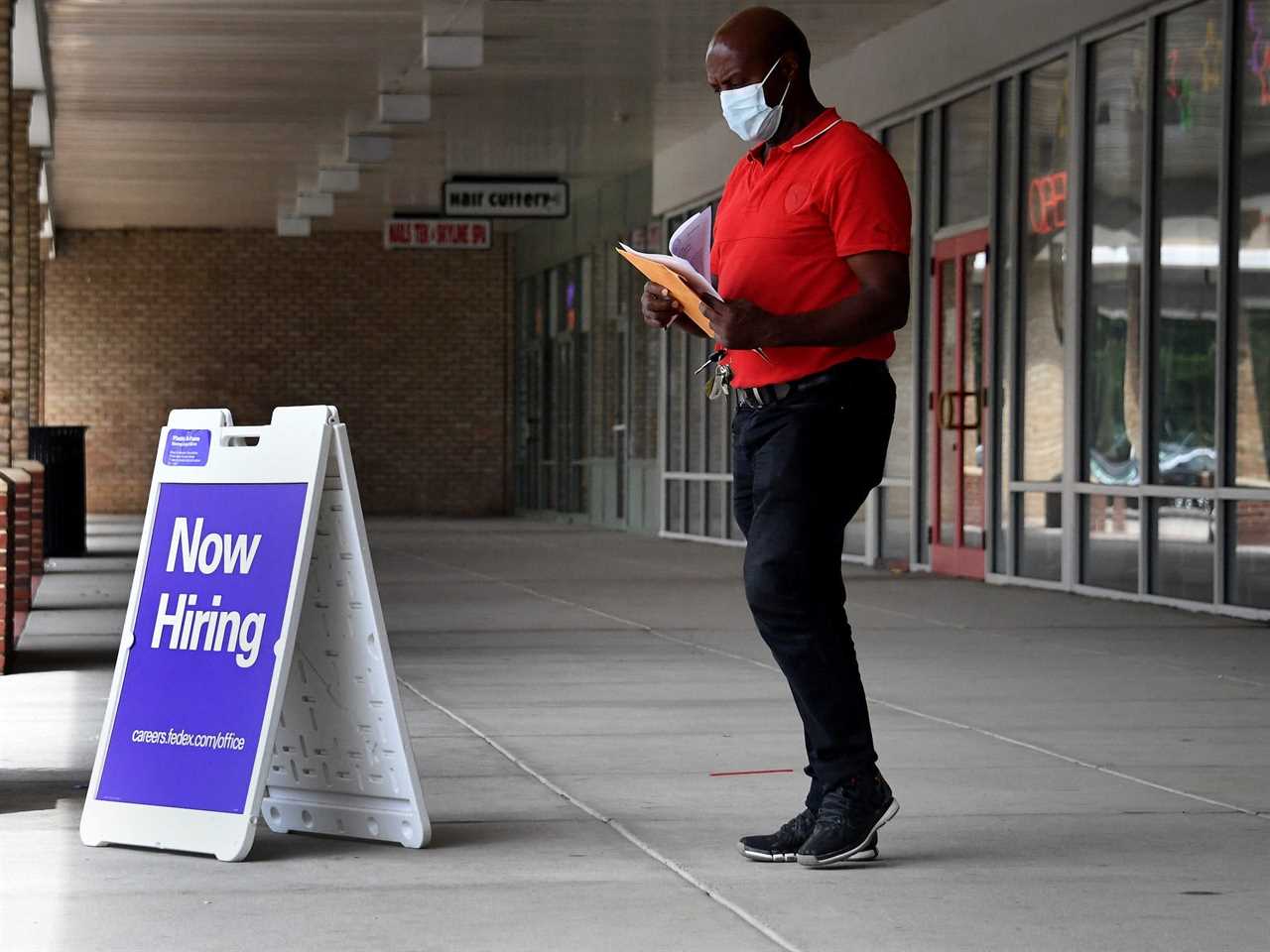
Pedestrians walk by a "Now Hiring" sign outside a store on August 16, 2021 in Arlington, Virginia.Olivier Douliery/AFP/Getty Images
-
The country saw an unexpectedly high increase in employment in January, surpassing all expectations.
-
Although it may seem bad news, the unemployment rate has risen. It's actually good news.
-
This means that more people entered the workforce looking for work, as wages rose and people changed jobs.
2022 already has many surprises, at least on the labor market.
The unexpectedly strong first job data release for the year, which tracks January hiring, was shocking. According to the Bureau of Labor Statistics, the country had 467,000 additional nonfarm payrolls in January. This is far more than economists expected at 150,000. Even the White House warned of a potentially devastating report.
Instead, data point to a boom recovery. One notable gain is that the unemployment rate jumped to 4%, exceeding the median forecast of 3.9%. Although it may sound like a bad sign for the economy, this is actually one of the most important data points. This means that more people are looking for work. With 952,000 people quitting their jobs in January and nine months of near record quits, it also shows that people have confidence in changing roles and accepting the job opportunities that exist.
The unemployment rate is the percentage of the workforce who are currently looking for work, but are not employed. You might not be considered "unemployed" if you haven't applied for jobs or sent out resumes in the past four weeks but don't have a job.
All active workers and all those currently employed are included in the total labor force. The pandemic's persistent problem has been the slowing of labor force participation rates for those groups most affected by the pandemic.
However, January saw a rise in labor force participation, from 61.9% in December, to 62.2% in January. This suggests that there are fewer Americans who are not working and more people looking for work. The employment-population ratio also ticked up slightly.
Glassdoor's senior economist Daniel Zhao told Insider that the increase in labor force participation was largely due to population revisions.
Zhao stated that although there was no significant jump in labor force participation in January it is clear that labor force participation was much higher than we originally thought.
There was a slight drop in the number of workers who could only find part time work, and a decrease in "disappointed" workers who believed that there were no jobs available.
There were more people looking for work than we thought and many of them found it. People sitting on the margins are one of the most important trends in employment. The latest data show that as wages rose, people returned to work and the unemployment rate increased.
There are many gaps. The labor force participation rate of black workers rose in January and their unemployment rate dropped. Despite this, Black unemployment is 6.9%, more than twice the rate of white unemployment. Zhao says that this gap would be ideal to shrink, rather than growing in tandem.
However, January's data and its implications for these last few months with revisions -- show that the labor market remains more robust than it initially appeared.
"When I look at the small increase in unemployment, I believe the overall story is that while the unemployment rate has remained low, labor force participation is much higher than we thought. This is an indicator of employers still hiring workers and that they are continuing to search for them."
 Make Money OnlineForexInvestingBitcoinVideosFinancePrivacy PolicyTerms And Conditions
Make Money OnlineForexInvestingBitcoinVideosFinancePrivacy PolicyTerms And Conditions
